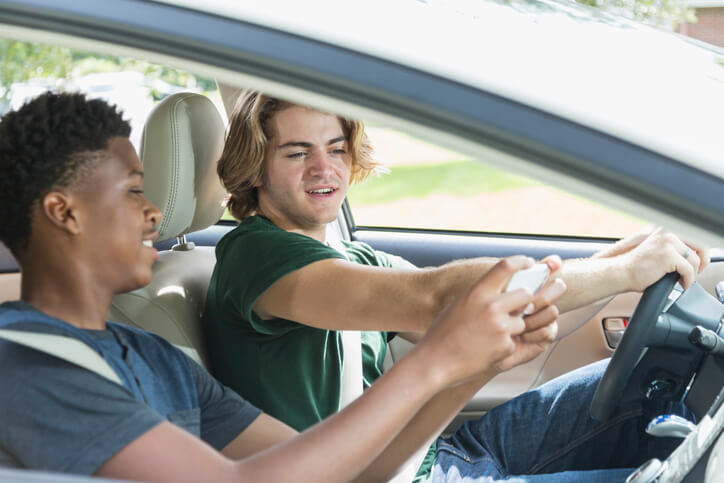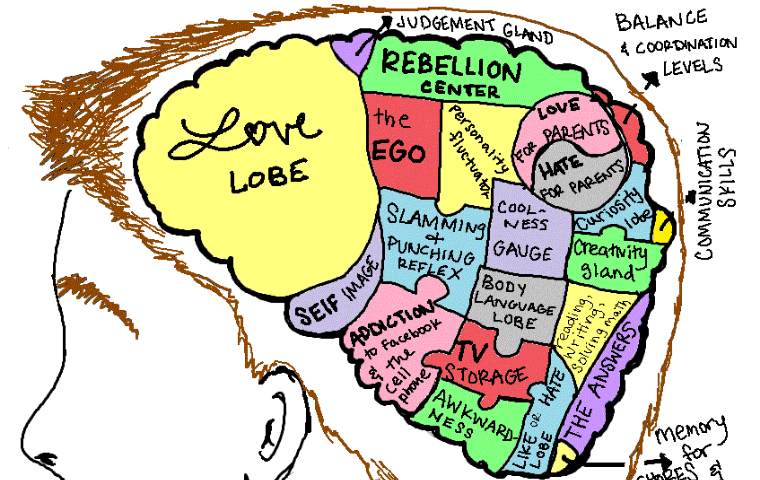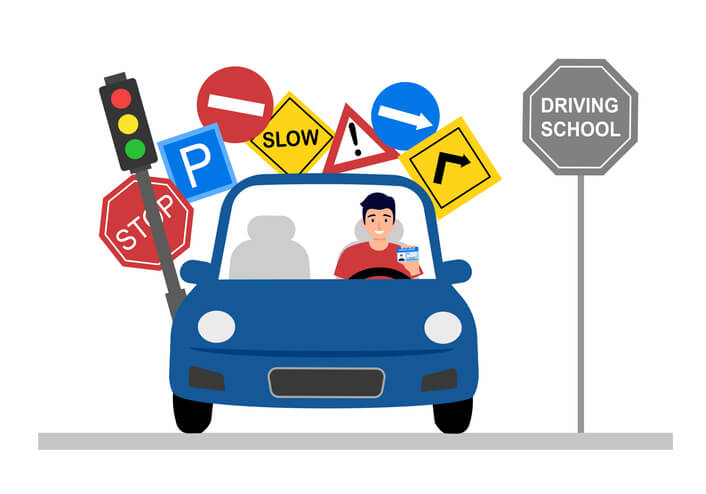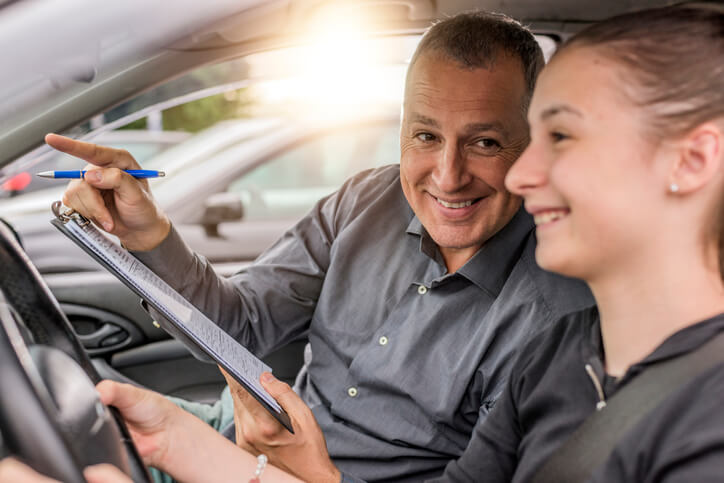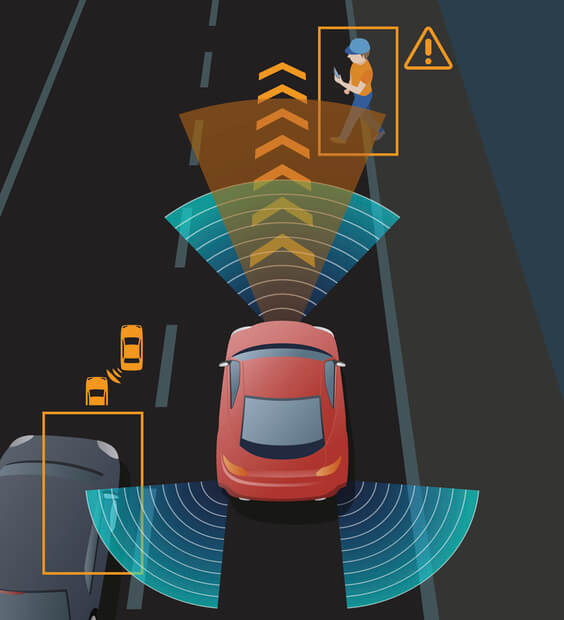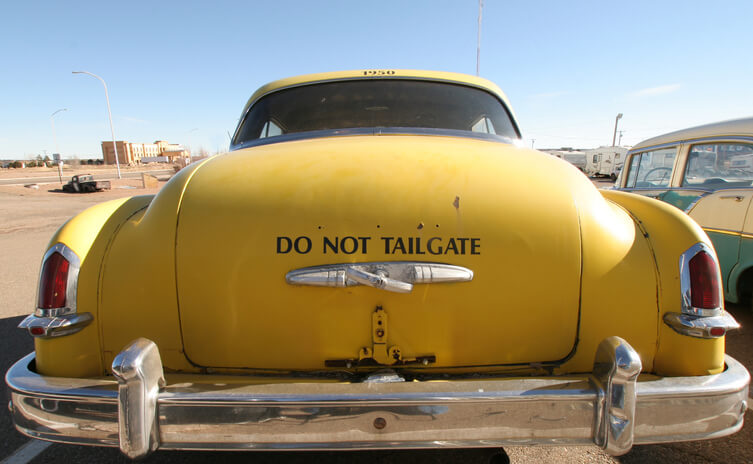New drivers between 15 and 19 are more likely than any other age group to be involved in a fatal collision due to distracted driving. Vehicle crashes are the number one cause of death for teenagers in the United States, and about 10% of those deaths involve distracted driving.
Challenges to our attention are a growing problem. Every day it seems like some new new distraction enters our lives. Put our phones away to drive? Now that message alerts pop up on your smart watch. Between steaming music platforms, satellite radio, podcasts and more there are more in vehicle entertainment options than ever, and new potential problems, like smart glasses, seem to be right around the corner. However, in addition to the devices we’re addicted to, you’ll face distractions in many forms.
To make sure you’re always focused behind the wheel, you’ll need to know the three categories of distraction, how some familiar sources fit into them, and how you tune it all out and stay focused on the road.
Using a phone provides a cognitive, manual, and visual distraction
Three Forms of Distraction
Visual distraction: Any time you take your eyes off the road, you’ve encountered a visual distraction. Taking your eyes off the road for even a few seconds can be incredibly dangerous. That’s why it’s essential to make quick, efficient checks when looking at your mirrors and instruments.
Manual distraction: Taking your hands off the wheel to snag a couple of fries before you get home? That’s a manual distraction. You cannot operate your vehicle safely if your hands and feet are not at the controls.
Cognitive distraction: Did I lock the front door? Are they ever going to text me back? These are the kinds of nagging questions that can lead to cognitive distraction. Even with your eyes on the road, hands on the wheel, and feet by the pedals, you’re still at a higher risk of collision if your mind isn’t focused on driving.
Sources of Distraction
Now that you’re familiar with the types of distraction, you should consider the sources you’ll need to avoid.
Tempting takeout: Eating and drinking while driving is a significant source of distraction. It can be hard to fight the hunger pangs with a fresh batch of food on the seat next to you, but you’ll be a safer driver if you wait until you get home to dive in.
Pesky passengers: Your passengers can be a massive distraction, especially if you’re a younger or less experienced driver. In fact, if you are a teen yourself, each additional teenager or young adult passenger in your vehicle increases your risk of getting into a collision. If you’re going to drive the crew around, you need to tune them out. Better yet, discuss ways they can be safer passengers and help you stay focused.
Outside influences: Ever get caught in one of those traffic jams because every driver ahead of you must slow down to look at something? Whether it’s a majestic landscape, a car crash, or the police pulling someone over, it’s common to divert attention to things outside your vehicle. Unless you’re in direct danger of colliding with them, keep your mind and eyes on the road unless you want to pull over to look.
DJ danger: No one wants to get stuck listening to a song or station they hate, but the time you spend interacting with the various entertainment systems in your vehicle puts you at risk. Adjust your radio, air conditioning, and other settings before heading out. If you must switch playlists on the road, have a passenger do it or pull over to do so safely.
Creatures and critters: It doesn’t matter if it’s your four-legged best friend wandering throughout your vehicle or an annoying fly that made its way in through an open window. Becoming distracted by our animal passengers is dangerous, so you should take proper precautions. If transporting pets, secure them before you hit the road. If you’re plagued by an insect incursion, learn to ignore them, or stop and remove them from your vehicle.
Dangerous devices: The final and most frequent cause of distracted driving crashes are those marvels of technology we carry with us, our phones. Whether using a GPS application or receiving or sending a message, using your phone is the most dangerous thing you can do while driving. Using a phone provides a cognitive, manual, and visual distraction, and at an average highway speed, you’ll travel about the length of a football field in just the time it takes to check it. That’s an incredibly dangerous window with no control over your vehicle.
you're still at a higher risk of collision if your mind isn't focused on driving
Tools at Your Disposal
If you’re worried about the risks of distracted driving and want to become a safer and more focused driver, you want to keep improving your focus. Make it a goal for each trip that you take.
You can take advantage of modern tools, like the DriverZ Virtual Coach, that can help detect distractions and improve your driving. Many phones and applications have driving modes so you avoid interruption, and soon, new models of vehicles might even alert you when your attention starts to wane. Most importantly, however, is to practice some common sense.
If you must take a phone call or send a text, pull over in a safe place. Wait until you get where you’re going before you dive into that breakfast burrito. Establish clear expectations with your passengers. Pick the radio station before you leave. None of these solutions are complicated or difficult, what’s critical is to be aware of the ways in which you know you can be distracted, and circumvent them.
If you’re a brand-new driver, or one with years of experience, learning to focus on the task of driving is arguably the single greatest safe driving skill you will ever develop. Perfect may be impossible, but you can get pretty darn close with enough practice. So stay focused on road, stay mindful of you know is likely to draw your attention, and never stop trying to improve.


